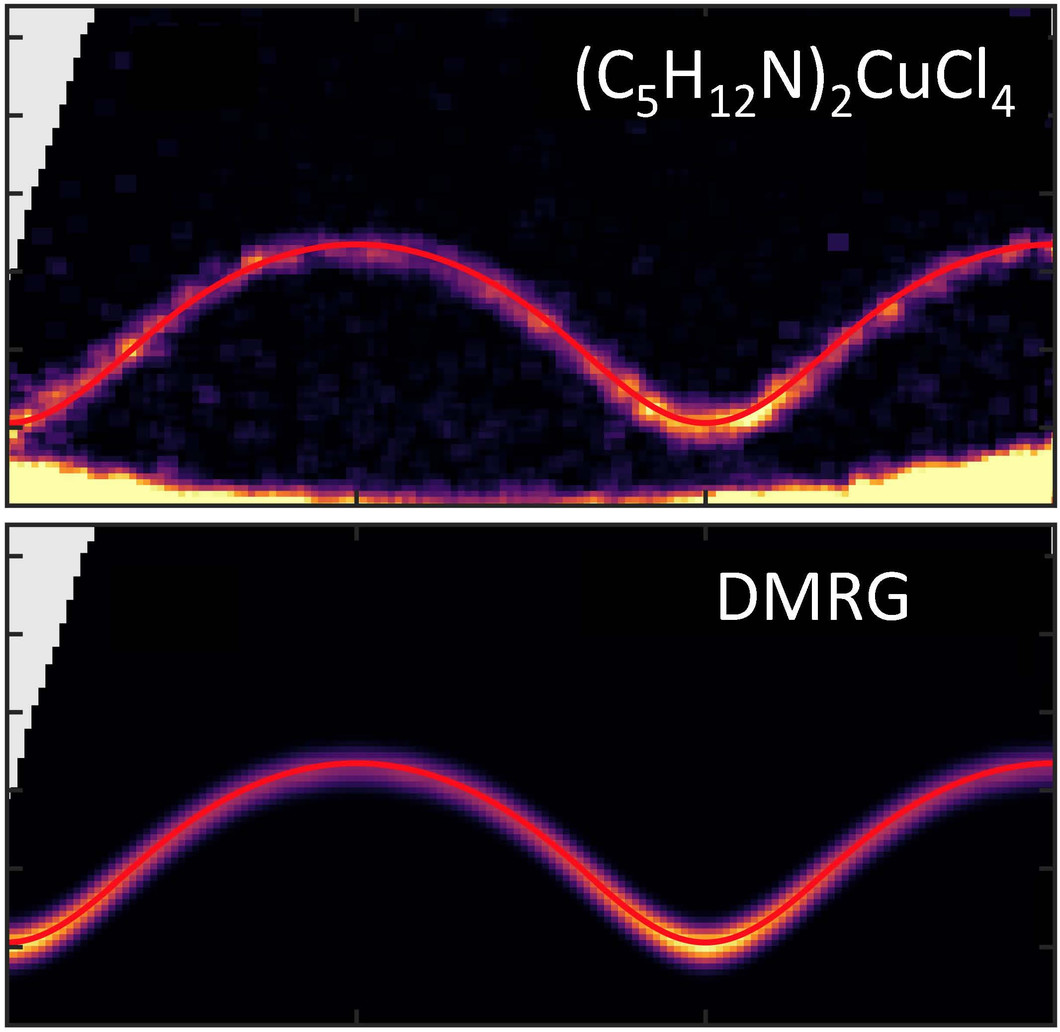Climbing the ladder
Quantum phenomena can lead to intriguing effects in materials, but are famously difficult to predict and understand. A combined experimental and theoretical study of a model quantum system provides insight into excitations that involve multiple particles at once.
“Just knowing the correct laws of quantum mechanics does not mean that one understands all the strange phenomena that it allows.” So spoke Duncan Haldane at last year’s Nobel Banquet, having just having received the Nobel Prize in Physics, together with David Thouless and Michael Kosterlitz. Understanding and controlling materials that exhibit ‘strange’ quantum phenomena remains a challenge for theoreticians and experimentalists alike. One way to tackle that challenge is to carefully measure relative simple systems that can represent a broad class of materials and then compare the experimental results with calculations. An international team led by PSI physicist Christian Rüegg has now just done that.
Writing in Physical Review Letters, the team reports their study of a so-called quantum spin ladder. These systems consist of two spin chains that are coupled to form a pattern reminiscent of a ladder. The simplicity of the pattern is deceptive, as interactions of the spins along each horizontal ‘leg’ combined with couplings across the vertical ‘rugs’ open up a rich set of possible quantum states. The most basic states are well understood, but many of those emerging as the system is excited remain unexplored. These excitations often cannot described as the response of many single particles that essentially all behave the same, but involve strongly correlated dynamics of several particles. And such multi-particle excitations are notoriously difficult to access.
Collaborative excitement
Rüegg and his team have now succeeded in detecting multi-particle excitations in a quantum spin ladder. They took advantage of two independent developments. First, with high-quality single crystals of bis-piperidinium copper tetrachloride (BPCC), provided by partners at the Department of Chemistry and Biochemistry in Bern, they had an ideal spin-ladder material. In BPCC, both the relative couplings along legs and rugs, and the energy scales involved are just right for studying the intricate excitations governed by the interplay of the coupling. Second, powerful new detector arrays for high-resolution neutron spectroscopy, in this case the LET instrument at the ISIS facility in the UK, have opened up new possibilities for the detailed study of the entire excitation spectrum of a material over the relevant energy range.
In Haldane’s tracks
The team exploited these capabilities to focus on individual excitations. By applying suitable external magnetic fields and exploiting fundamental symmetries, they singled out several excitations, some of which have not been observed so far. In particular, they measured excitations that are analogous to the modes anticipated in a so-called polarized Haldane chain — a model first studied theoretically by Haldane in 1983. For the present study, collaborating teams at the universities of Geneva, Bonn and Erlangen-Nürnberg provided a quantitative interpretation of the experimental results, based on cutting-edge numerical simulations. They found accuracies within 1% of experimental observation, demonstrating an excellent understanding of all the many-particle quantum states involved.
Like the ‘topological’ effects discovered by Haldane, Thouless and Kosterlitz, the phenomena explored by Rüegg and his team are based on seemingly simple interactions between atoms, giving rise to complex quantum phenomena as they lead to strong correlations between the particles. These correlations in turn lead to the “strange” phenomena of quantum materials Haldane is eluding to. And his outlook into the future is bright: “What has been learned is that [quantum mechanics] can do ‘really cool things’ that had never been guessed at before, and might some day actually be practically useful.”
